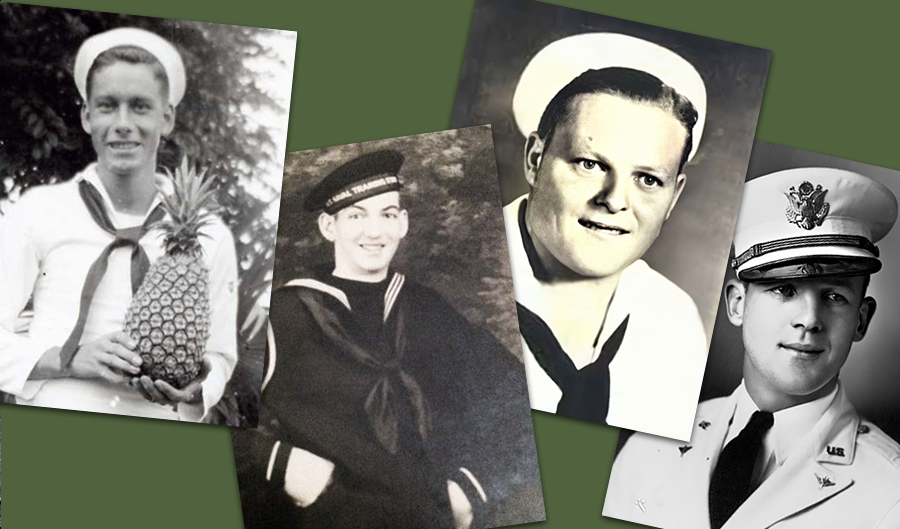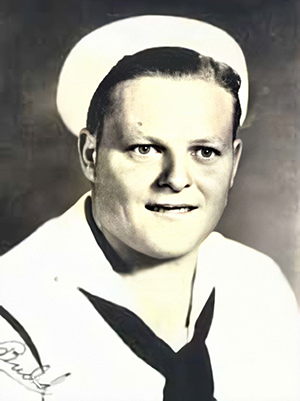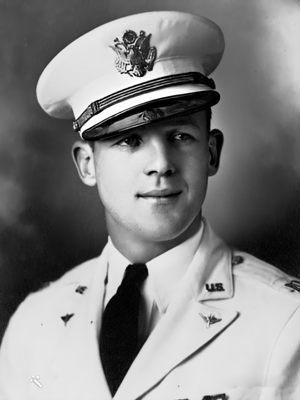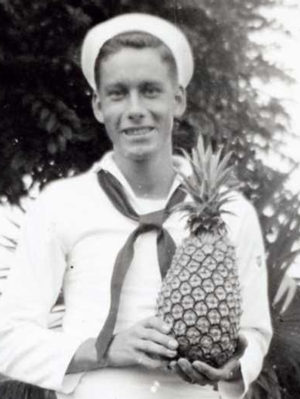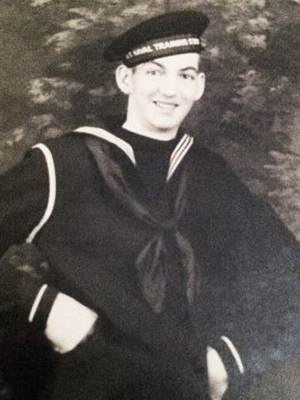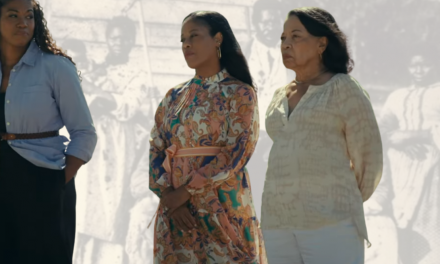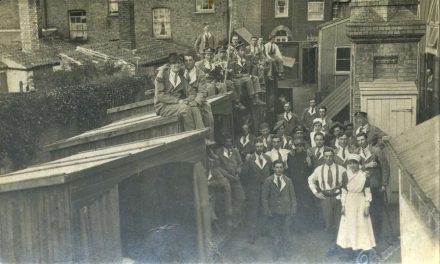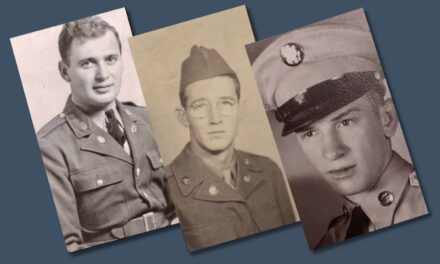The US Defense POW/MIA Accounting Agency ams to provide the fullest possible accounting for US missing personnel to their families and the nation.
The Agency works to identify the remains of service personnel reported as missing in action and below you can find details of some of their recent discoveries.
Table of Contents
Navy Seaman 2nd Class Laverne A. Nigg, 23, of Browns Valley, Minnesota, killed during World War II, was accounted for on April 22, 2021.
On Dec. 7, 1941, Nigg was assigned to the battleship USS Oklahoma, which was moored at Ford Island, Pearl Harbor, when the ship was attacked by Japanese aircraft. The USS Oklahoma sustained multiple torpedo hits, which caused it to quickly capsize. The attack on the ship resulted in the deaths of 429 crewmen, including Nigg.
Between June and November 2015, DPAA personnel exhumed the USS Oklahoma Unknowns from the Punchbowl cemetary for analysis.
To identify Nigg’s remains, scientists from DPAA used dental and anthropological analysis. Additionally, scientists from the Armed Forces Medical Examiner System used mitochondrial DNA (mtDNA), Y chromosome DNA (Y-STR), and autosomal DNA (auDNA) analysis.
U.S. Army Air Forces Lt. Col. Addison E. Baker, 36, of Chicago, killed during World War II and posthumously awarded the Medal of Honor, was accounted for April 8, 2022.
In the summer of 1943, Baker was the commander of the 328th Bombardment Squadron (Heavy), 93rd Bombardment Group (Heavy), 9th Air Force. On Aug. 1, 1943, Baker was piloting a B-24 Liberator bomber during Operation TIDAL WAVE, the largest World War II bombing mission against the oil fields and refineries at Ploiesti, north of Bucharest, Romania. During its bombing run, his plane was hit by enemy anti-aircraft fire and crashed, but not before he dropped his bombs on the target and avoided crashing into the other B-24s in his formation. Baker’s remains were not identified following the crash. Remains that could not be identified were buried as Unknowns in the Hero Section of the Civilian and Military Cemetery of Bolovan, Ploiesti, Prahova, Romania.
Following the war, the American Graves Registration Command (AGRC), the organization that searched for and recovered fallen American personnel, disinterred all American remains from the Bolovan Cemetery for identification. The AGRC was unable to identify more than 80 unknowns from Bolovan Cemetery, and those remains were permanently interred at Ardennes American Cemetery and Henri-Chapelle American Cemetery, both in Belgium.
In 2017, DPAA began exhuming unknowns believed to be associated with unaccounted-for airmen from Operation TIDAL WAVE losses. These remains were sent to the DPAA Laboratory at Offutt Air Force Base, Nebraska, for examination and identification.
To identify Baker’s remains, scientists from DPAA used anthropological analysis, as well as circumstantial evidence. Additionally, scientists from the Armed Forces Medical Examiner System used mitochondrial DNA (mtDNA) and Y chromosome DNA (Y-STR) analysis.
Navy Musician 1st Class Joseph W. Hoffman, 24, of Chillicothe, Ohio, killed during World War II, was accounted for on Sept. 8, 2020.
On Dec. 7, 1941, Hoffman was assigned to the battleship USS Oklahoma, which was moored at Ford Island, Pearl Harbor, when the ship was attacked by Japanese aircraft. The USS Oklahoma sustained multiple torpedo hits, which caused it to quickly capsize. The attack on the ship resulted in the deaths of 429 crewmen, including Hoffman.
From December 1941 to June 1944, Navy personnel recovered the remains of the deceased crew, which were subsequently interred in the Halawa and Nu’uanu Cemeteries.
In September 1947, tasked with recovering and identifying fallen U.S. personnel in the Pacific Theater, members of the American Graves Registration Service (AGRS) disinterred the remains of U.S. casualties from the two cemeteries and transferred them to the Central Identification Laboratory at Schofield Barracks. The laboratory staff was only able to confirm the identifications of 35 men from the USS Oklahoma at that time. The AGRS subsequently buried the unidentified remains in 46 plots at the National Memorial Cemetery of the Pacific, known as the Punchbowl, in Honolulu. In October 1949, a military board classified those who could not be identified as non-recoverable, including Hoffman.
Between June and November 2015, DPAA personnel exhumed the USS Oklahoma Unknowns from the Punchbowl for analysis.
To identify Hoffman’s remains, scientists from DPAA used anthropological analysis. Additionally, scientists from the Armed Forces Medical Examiner System used Y chromosome DNA (Y-STR) analysis.
Navy Seaman 2nd Class Tceollyar Simmons, 18, of Detroit, killed during World War II, was accounted for on Nov. 18, 2021.
On Dec. 7, 1941, Simmons was assigned to the battleship USS California, which was moored at Ford Island, Pearl Harbor, when the ship was attacked by Japanese aircraft. The USS California sustained multiple torpedo and bomb hits, which caused it catch fire and slowly flood. The attack on the ship resulted in the deaths of 104 crewmen, including Simmons.
From December 1941 to April 1942, Navy personnel recovered the remains of the deceased crew, which were subsequently interred in the Halawa and Nu’uanu Cemeteries.
In September 1947, tasked with recovering and identifying fallen U.S. personnel in the Pacific Theater, members of the American Graves Registration Service (AGRS) disinterred the remains of U.S. casualties from the two cemeteries and transferred them to the Central Identification Laboratory at Schofield Barracks. The laboratory staff was only able to confirm the identifications of 39 men from the USS California at that time. The AGRS subsequently buried the unidentified remains at the National Memorial Cemetery of the Pacific (NMCP), known as the Punchbowl, in Honolulu. In October 1949, a military board classified the 25 Unknowns who could not be identified as non-recoverable, including Simmons.
In 2018, DPAA personnel exhumed the 25 USS California Unknowns from the Punchbowl for analysis.
To identify Simmons’ remains, scientists from DPAA used dental and anthropological analysis. Additionally, scientists from the Armed Forces Medical Examiner System used mitochondrial DNA (mtDNA) analysis.
Simmons’ name is recorded on the American Battle Monuments Commission’s Courts of the Missing at the Punchbowl, along with the others who are missing from WWII. A rosette will be placed next to his name to indicate he has been accounted for.
Simmons will be buried on June 14, 2022, in Hacoda, Alabama.
U.S. Army Air Forces Tech. Sgt. William F. Teaff, 26, killed during World War II, was accounted for April 20, 2022.
In the spring of 1944, Teaff was assigned to the 351st Bombardment Squadron, 100th Bombardment Group (Heavy), 8th Air Force. On March 6, he was the radio operator aboard a B-17 Flying Fortress bomber that was part of a larger mission to bomb targets in Berlin. German fighters attacked the B-17’s formation while it flew over The Netherlands, and Teaff’s plane was destroyed. The entire crew except for the navigator, who was killed when the plane was hit, was able to bail out before the B-17 blew up in the sky. The crew was captured by the Germans and several of them, including Teaff, were sent to Stalag Luft 6, a prisoner of war camp in Heydekrug, Germany. Teaff was one of only three Americans who died in the POW camp. He died July 10 in the nearby village of Matzicken, Lithuania, where he was receiving medical treatment for diptheria.
Marine Corps Reserve Cpl. William R. Ragsdale, 23, killed during World War II, was accounted for April 15, 2022.
In June 1944, Ragsdale was a member of Headquarters Company, 1st Battalion, 24th Marine Regiment, 4th Marine Division, which was part of the invasion force of the island of Saipan in a larger effort to capture the Mariana Islands from Japan. Ragsdale was initially reported as wounded in action and evacuated from Saipan on June 28. When he was unable to be found during the chaos surrounding the battle and its aftermath, his status was changed to missing in action and then later deceased.
U.S. Army Pfc. Merl W. Holm, 22, killed during World War II, was accounted for April 15, 2022.
In November 1942, Holm was assigned to the Company K, 3rd Battalion, 126th Infantry Regiment, 32nd Infantry Division, deployed in present day Papua New Guinea. As part of an attempt to neutralize the Japanese threat to Port Moresby, the Allied center of communications in the area, Holm’s unit attempted to flank the enemy defensive lines stretched across the Sanananda Track in northern Papua. Holm was reported as killed in action on Nov. 26. Holm was posthumously awarded the Silver Star.
